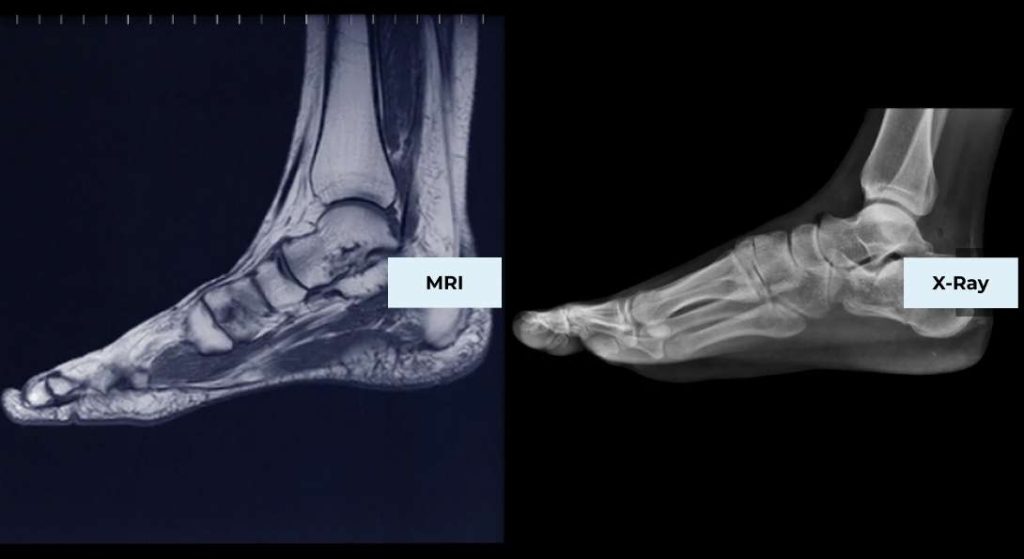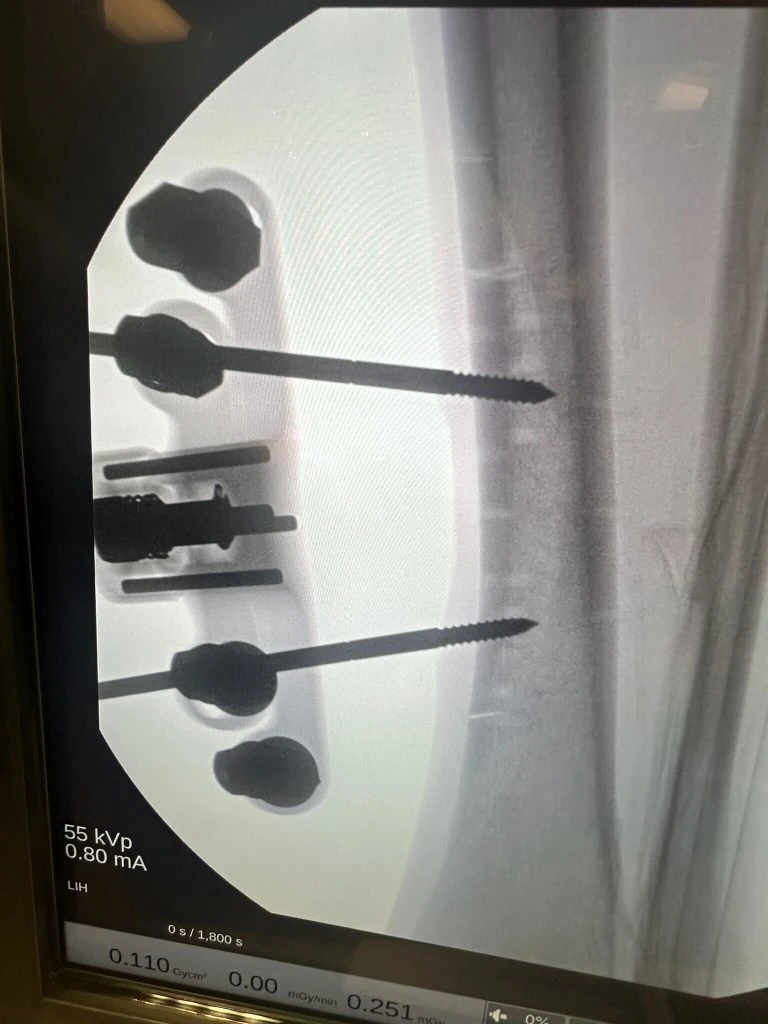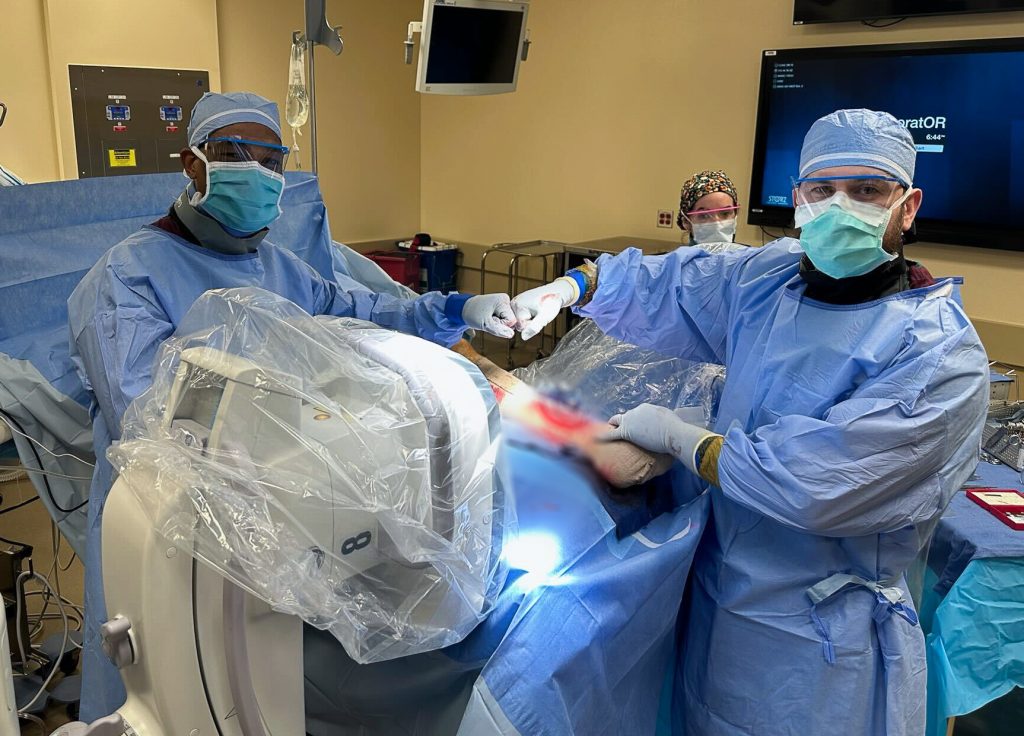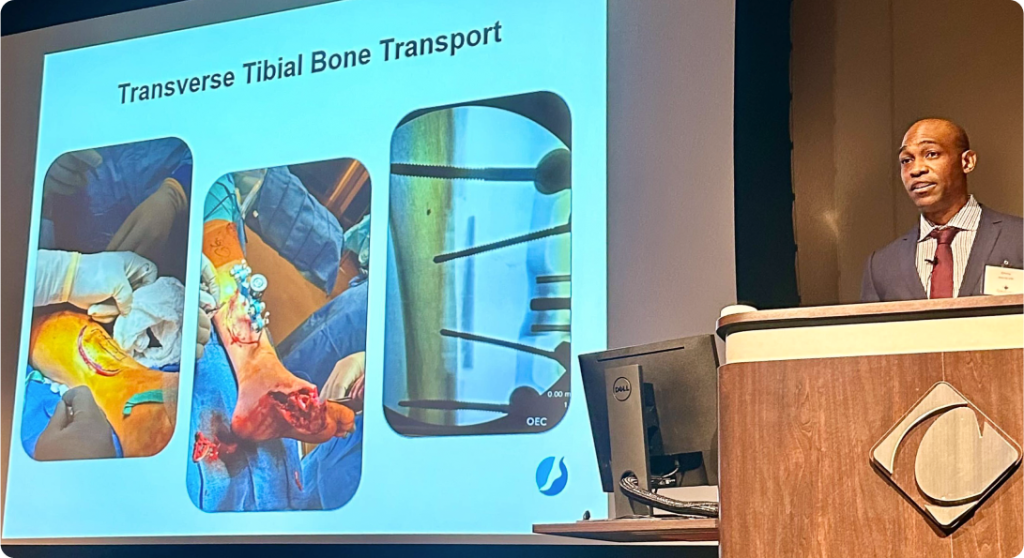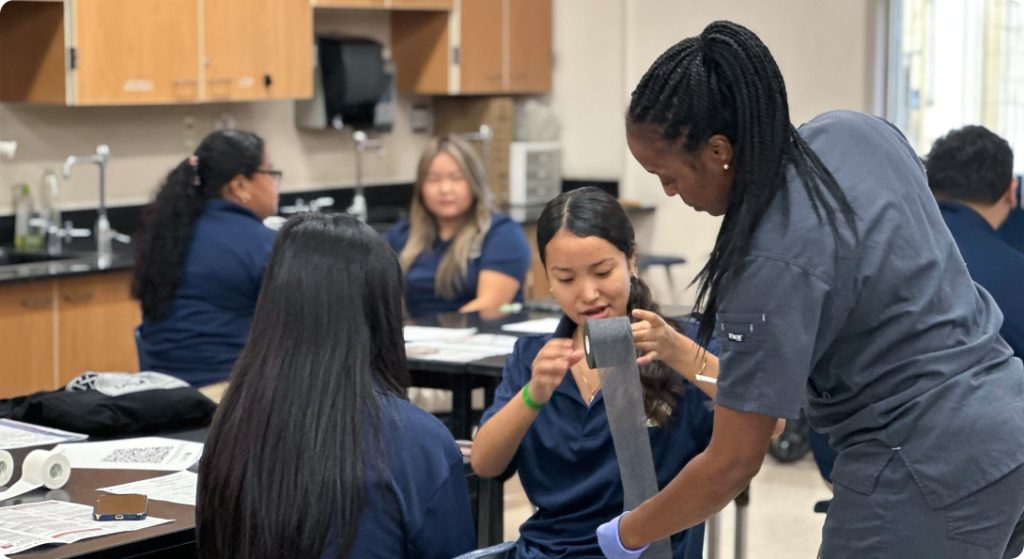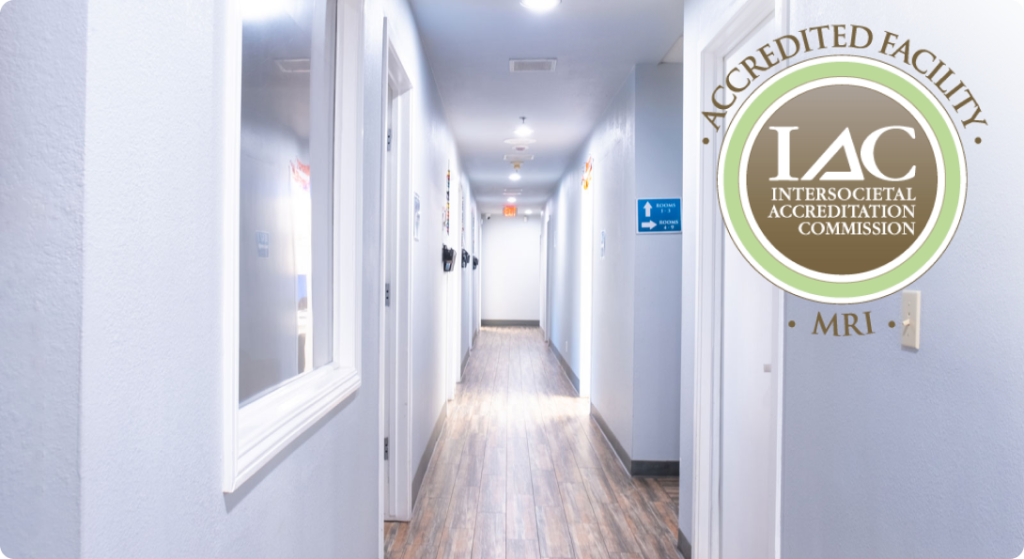The foot and ankle are made up of numerous bones, joints, ligaments, muscles, and nerves, making it difficult to detect the exact source of pain or discomfort. Many conditions can cause similar symptoms which can lead to misdiagnosis.
Imaging is a common way to get an objective and detailed view of the foot.
X-rays are primarily good for visualizing the foot’s bones and alignment.
Ultrasounds can provide real-time imaging of muscles and some ligaments. Ultrasounds, however, miss issues in deeper tissues and joints.
Magnetic resonance imaging (MRI), is capable of creating a high-quality images of the entire foot. Including Muscles, ligaments, and blood vessels.
Some musculoskeletal conditions, like early arthritis or stress fractures, might have subtle presentations initially, making them easy to miss.
MRI imaging Can make conditions easy to diagnose and treat.
X-Rays
Strengths: Excellent at visualizing bones, fractures, and dislocations.
Weaknesses: Limited visibility of soft tissues like muscles, ligaments, tendons, and nerves, which are crucial for musculoskeletal issues. Cannot assess inflammation or subtle bone injuries.
Ultrasounds
Strengths: Provides real-time imaging of muscles, tendons, and some ligaments. Relatively portable and less expensive than MRI.
Weaknesses: Limited penetration depth, making it less effective for deeper structures like bones and joints. Cannot fully visualize certain structures like nerves or assess bone marrow changes.
MRI
Strengths: Provides extremely detailed 3D images of ALL foot and ankle structures, including bones, joints, muscles, ligaments, tendons, nerves, and blood vessels. Can detect inflammation, tears, abnormalities, and subtle bone injuries invisible on X-rays and ultrasounds.
Weaknesses: Can pose dangers for some patients with metal implants, and not always readily available.
MRI’s ability to visualize everything outweighs its limitations. It allows for:
- More accurate diagnosis: pinpointing the exact source of pain or dysfunction, leading to more targeted treatment.
- Early detection: identifying issues like stress fractures or arthritis before they worsen.
- Improved treatment planning: guiding surgical interventions, injections, or physical therapy based on precise information.
- Reduced need for invasive procedures: avoiding exploratory surgeries or injections by providing clear visualization.
Musculoskeletal Conditions That Can Be Diagnosed Early Using MRI:
- Plantar Fasciitis: MRI can help visualize inflammation and thickening of the plantar fascia.
- Achilles Tendonitis/Tendinopathy: MRI can reveal changes in the Achilles tendon, such as inflammation, thickening, or degeneration.
- Morton’s Neuroma: MRI can identify the enlargement or inflammation of the interdigital nerve typically occurring between the metatarsal heads.
- Tarsal Tunnel Syndrome: MRI can be used to assess compression or entrapment of the posterior tibial nerve within the tarsal tunnel.
- Stress Fractures: MRI is sensitive to detecting stress reactions or fractures in the bones of the foot and ankle.
- Arthritis (Osteoarthritis or Rheumatoid Arthritis): MRI can show joint space narrowing, cartilage degeneration, and synovial inflammation.
- Ligament Tears or Sprains: MRI can reveal injuries to ligaments such as the anterior talofibular ligament (ATFL) or calcaneofibular ligament (CFL).
- Bursitis: MRI can detect inflammation of bursae around the foot and ankle, such as retrocalcaneal bursitis.
- Ganglion Cysts: MRI can help identify fluid-filled cysts around joints and tendons.
- Tendon Tears or Ruptures: MRI can visualize tears or ruptures of various tendons, such as the peroneal tendons.
- Osteochondral Lesions: MRI can reveal damage to the articular cartilage and underlying bone, commonly found in joints like the ankle.
- Synovitis: MRI can show inflammation of the synovial lining of joints or tendon sheaths.
- Accessory Bones or Os Trigonum: MRI can assist in identifying extra bones or abnormalities within the foot, such as an os trigonum.
- Infections or Abscesses: MRI can be useful in detecting soft tissue infections or abscesses in the foot.
- Tumors and Masses: MRI can help in characterizing soft tissue masses or tumors within the foot and ankle.

